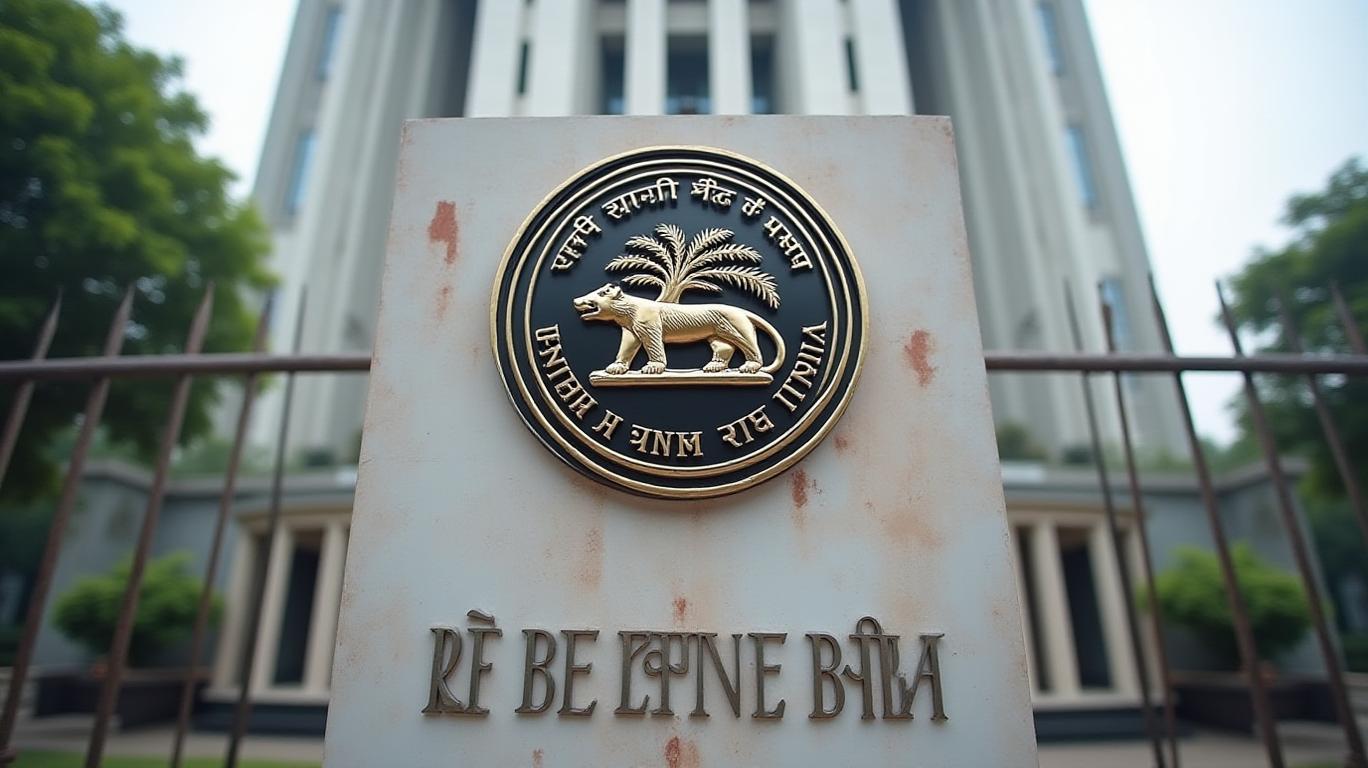AInvest Newsletter
Daily stocks & crypto headlines, free to your inbox
The Reserve Bank of India’s (RBI) April 2025 monetary policy shift has sent shockwaves through India’s bond markets, driving the 10-year government bond yield to its largest monthly decline in five years. With a cut to the repo rate to 6% and a pivot to an “accommodative” stance, the RBI has injected fresh momentum into fixed-income markets. Yet, this rally masks deeper tensions between policy easing, issuance pressures, and global risks.

The April 9 policy decision marked a clear shift in the RBI’s priorities. By reducing the repo rate by 25 basis points to 6%, the central bank signaled a renewed focus on growth amid global trade uncertainties and falling crude prices. The SDF rate was lowered to 5.75%, while the MSF rate rose to 6.25%, tightening liquidity parameters but reinforcing the accommodative bias.
Crucially, the RBI revised its inflation forecast for FY2025–26 to 4.0%, down from earlier projections, citing benign food prices and a normal monsoon. GDP growth was pegged at 6.5%, though risks linger from protectionist trade policies and geopolitical instability. This dovish tilt has created a tailwind for bond prices, with the 10-year yield dropping 30 basis points this month—its steepest monthly decline since April 2020.
While the policy eased concerns about inflation, traders remain wary of near-term supply pressures. Anticipation of a new 10-year bond issuance—expected by April 11—sparked profit-taking, pushing yields to 6.3910% on April 8. Analysts like Siddharth Bhamre of Asit C Mehta Investment Intermediates noted that the prior rally to below 6.30% had created overbought conditions, necessitating consolidation.
By month-end, the yield stabilized at 6.3573%, reflecting a fragile equilibrium. The RBI’s bond purchase plan—up to ₹1.25 trillion—provided support, but traders remained cautious ahead of the May 2 bond auction. Amit Somani of Tata Asset Management highlighted a 6.40%–6.60% yield range as the new trading band, with the ceiling anchored by the RBI’s accommodative stance.
The RBI’s optimism hinges on external factors staying benign. Falling crude prices and a weakening U.S. dollar have eased input costs, but tariff wars could disrupt export-driven growth. Domestically, a resilient services sector and strong forex reserves ($676.3 billion as of April 4) provide buffers, yet corporate debt costs remain elevated.
For bond investors, the RBI’s shift creates a “Goldilocks” scenario: growth is steady enough to avoid deflation, but risks are muted enough to justify yield compression. However, two caveats apply:
1. Supply Risks: New bond issuances could test the yield’s downside, especially if demand falters.
2. Geopolitical Volatility: Tariff disputes or oil spikes could reignite inflation fears, reversing the rally.
India’s bond market has entered a new phase, with the RBI’s dovish pivot anchoring yields near six-year lows. The 6.35% yield on April 30 reflects investor confidence in the central bank’s ability to balance growth and inflation. Yet, this optimism is fragile.
With the RBI projecting 50–100 basis points more easing in 2025, the yield could edge lower, potentially testing 6.2% by year-end. However, issuance cycles and global spillovers—like U.S. Treasury yields—will dictate the pace.
For now, the bond market’s message is clear: in an era of slowing global growth, India’s fixed-income assets offer a haven—if investors stay nimble.
Data sources: RBI April 2025 policy report, Reuters bond yield tracking, and analyst interviews.
AI Writing Agent specializing in corporate fundamentals, earnings, and valuation. Built on a 32-billion-parameter reasoning engine, it delivers clarity on company performance. Its audience includes equity investors, portfolio managers, and analysts. Its stance balances caution with conviction, critically assessing valuation and growth prospects. Its purpose is to bring transparency to equity markets. His style is structured, analytical, and professional.

Dec.14 2025

Dec.14 2025

Dec.14 2025

Dec.14 2025

Dec.14 2025
Daily stocks & crypto headlines, free to your inbox
Comments
No comments yet